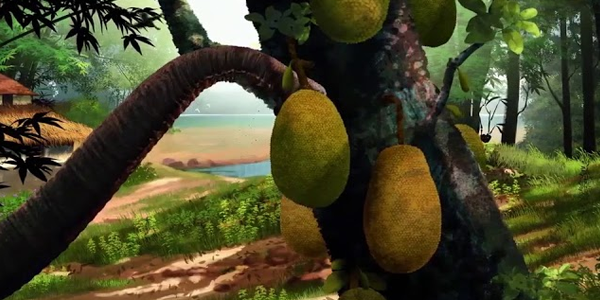The skies darken and a cool breeze picks up. As the first raindrops hit the earth, suddenly, everything feels different. We reach for umbrellas, sip on piping hot chai, and find comfort in cozy corners. But for animals, the rains signal something much more powerful: a time to move, mate, migrate, feed, and come alive.

While we seek shelter, the natural world bursts into action. From frogs croaking in puddles to butterflies migrating, from birds calling to insects buzzing, the monsoon is one of the most dynamic and dramatic times in the animal kingdom.
So, what really happens in the wild when it rains?
Critters on the Move
Ever noticed more tiny creatures crawling around during monsoon? That’s because soil-dwelling animals like ants, earthworms, frogs, and crabs are forced above ground when rainwater fills the air pockets in the soil. In search of drier spaces, they move to crevices, under rocks, thick bushes, and sometimes even into our homes!
Some crabs, like the red ghost crabs stage a spectacular migration along the coastal beaches of Odisha, as monsoon arrive. They emerge from their burrows and move en masse towards the sea to breed, turning stretches of the beach crimson in colour.

Insects Awaken!
The rainy season is a wake-up call for many insects. Take the cicadas, for example, famous for their loud buzzing. Some species enter a dormant state called diapause during dry spells. When the weather becomes moist and cooler, they re-emerge to feed and reproduce. Most of the crabs in India are annual, which means they become active once a year, just before the rains!

Butterflies like the blue tiger and common crow undertake seasonal migrations between the Western and Eastern Ghats, roosting in large numbers along the way.
Monsoon Migrants and Nesters
Birds too respond to the rains in amazing ways.
The pied cuckoo, also known as the chataka, is one of the first birds to arrive with the monsoon winds. Its call is often considered a signal of the season’s arrival.

Some birds, like the baya weaver, time their nesting to the rains. Males build intricate hanging nests from grasses, often over water, to impress potential mates. With plenty of insects and worms around, it’s also a good time for feeding growing chicks.
And don’t forget the rain quail! This elusive ground bird becomes more vocal and visible during the rains. Its distinctive “wet-it, wet-it” call echoes at dawn and dusk, and it nests in flourishing grasslands and agricultural fields.

A Chorus of Amphibians
Walk past any waterlogged area and you’re likely to hear a full-on concert-frogs and toads croaking to attract mates. The Indian bullfrog puts on quite a show during monsoon. Males can be seen inflating their bright yellow-blue vocal sacs to call out to females.

Amphibians rely on temporary pools, puddles, and even rice fields for laying eggs and breeding. The abundance of water creates the perfect microhabitats for tadpoles to thrive.
Blooms and Buzzes
It’s not just animals that come alive. The monsoon breathes life into seasonal plants too. Monsoon ephemerals, flowers that bloom only for a short time, such as ground orchids, balsams, and spider flowers create a carpet of colour. Stocks balsam (Impatiens stocksii) and stemless balsam (Impatiens acaulis), from the Western Ghats are especially known for their stunning colours. These blooms attract pollinators like bees and butterflies, adding to the seasonal buzz.

So, the next time it rains, instead of hiding indoors, take a walk (safely, of course). Listen closely; the monsoon has its own soundtrack. Observe how animals behave and notice the patterns of life around you. Every rustle, call, and splash tell a monsoon story waiting to be discovered.
Now that you’ve explored how animals behave when it rains, it’s time to go one step further: learn, watch, read, observe, and create!
-
Learn:
Take the Butterfly Buff Course
Butterflies are everywhere during the rainy season, roosting, migrating, or feeding on fresh blooms. Through this digital course, you’ll learn to identify different species, understand their life cycle and behaviour, and even become a butterfly-watcher yourself! -
Watch:
Video on Our Planet – How to Save Fresh Water Flow
Rivers, streams, and wetlands swell during the monsoon, but they also face threats. This short video shows why freshwater ecosystems are important, what puts them at risk, and how we can protect them. -
Read:
Comic on The King’s Lair
This illustrated story takes you into the world of the majestic lion, showing how wildlife survives in changing seasons. It’s a short but powerful read that connects habitat, water, and survival. -
Explore:
Your Backyard through this Digital Interactive
Discover the extraordinary details of the ordinary things in your backyard. From fluttering butterflies to blooming trees, explore and build your skills as a young naturalist! -
BONUS! Creative Corner: Make a Comic
Create a comic that shows an animal’s monsoon adventure. It could be a frog escaping the rain, a butterfly on a journey, or a crab on a rainy-day mission. Share your comic with us at oneplanetacademy@wwfindia.net and we’ll feature it on social media!
Time to check your Nature Quotient!

Take this 5-step journey on One Planet Academy and tell us what you discovered. The top 10 scorers will win WWF-India merch coupon codes and a shoutout on WWF-India’s social media!













buy number with crypto
I’ve been exploring https://terpenewarehouse.com/collections/terpenes-for-anxiety recently, and I’m deep down enjoying the experience. The scents are rich, typical, and pleasant. They add a outgoing touch to my always habit, plateful fasten on the mood and atmosphere. A large catch sight of to save anyone who appreciates savoury wellness tools.